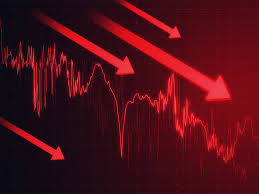Is a Recession around the corner?
There’s a lot of noise about the negative job growth in small businesses. Now there’s the 818,000 downward revisions to U.S. payrolls — the largest since 2009. Is it signaling recession?
- “By the time the 2009 revisions came out (824,000 jobs were overstated), the National Bureau of Economic Research had already declared a recession six months earlier.”
- “Jobless claims, a contemporaneous data source, had surged north of 650,000, and the insured unemployment rate had peaked at 5% that very month.”
These revisions are from April 2023 to March 2024, so we don’t know whether current numbers are higher or lower. It may well be that the models used by the Bureau of Labor Statistics are overstating economic strength at a time of gathering weakness. While there are signs of softening in the labor market and the economy, here’s how these 2009 indicators are behaving now:
- A recession hasn’t been declared.
- The 4-week moving average of jobless claims at 235,000 is unchanged from a year ago. The insured unemployment rate at 1.2% has been unchanged since March 2023. Both are a fraction of what they were during the 2009 recession.
- GDP has been positive for eight straight quarters. It would have been positive for longer if not for the 2022 mini-recession.
This shows a deep weakness in the economy, is this an outlier compared to the contemporaneous data. This can be a signal job growth is overstated by an average of 68,000 per month.
But that just brings average employment growth down to 174,000 from 242,000. How the BLS parcels out that weakness over the course of the 12-month period will help determine if the revisions were concentrated more toward the end of the period, meaning they have more relevance to the current situation.
Have these numbers been manipulated for the current administration? With these numbers the Federal Reserve may not have needed to increase interest rates as high as they are. Rumors are that the coming rate cuts are one and done. The question is will the cut be higher than 1/4 point. Past history has shown that the markets have not performed well in a period of declining rates. With the Fall, often comes a fall in the market, so all of this bares watching. September & October have been brutal months.




